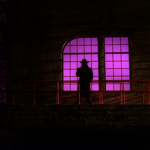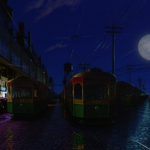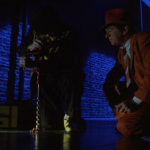SPOILER WARNING
This film’s strengths and weaknesses both pertain to the issue of “heart” in film.
If not for the fact that this is a spin-off of The LEGO Movie, the writers would have been free to simply fill the entire film with fun Batman jokes and absurd mix-ups and lunacy that only make sense in an animated comedy. The LEGO Movie, however, has a lot of heart to it that tied the film together nicely and offered a solid foundation for its comedy. I argue that LEGO Movie is probably one of the better examples of heart done well because, by that point in the movie, it feels needed and welcomed, as opposed to being forced down our throats at the very beginning like in other family films. I often think back on an argument between Siskel and Ebert (which I explained in my Scrooged review) in which Gene Siskel said Back to the Future II should have stopped to take the time to add more heart. I think this is a fairly stupid position to hold seeing as how a movie should really bring in heart at times when it is necessitated by (and it necessitates) the story, but unfortunately, The LEGO Batman Movie makes its heart-warming scenes feel almost out of place, even though they inform much of the story and supply the main character motivation. Somewhere in the crazy, convoluted mess that was the writing process for this film – consisting of a grand total of five people getting screenwriting credits – the story kept getting reworked until the final result felt like certain scenes were in the script simply to satisfy a “kids movie checklist” of some sort, and most of the bullets on the list pertained to grabbing the heartstrings. Since I watched this film in a theater filled with children, it was very easy to tell that these scenes simply did not succeed at grabbing the audience.
The rest of the movie, however, is filled with the best kind of heart: passion. LEGO Batman is one of those films with the rare quality of feeling like a great fan project was given a Hollywood budget and free range. The film may be loaded with fan-service and a little too dependent on the laughability of previous incarnations of Batman, but it just loves its world and its characters so much that the passion is infectious. The beauty of the thing, of course, comes from the fact that this is a LEGO-based film, so it can do things with Batman that couldn’t work with the real Batman, and that couldn’t work with a parody, but work perfectly in the space in between. After all, who doesn’t want to see the Dynamic Duo fight off the gremlins, the Joker recruit Godzilla, or freaking Voldemort casting spells in the Bat Cave? In a Batman movie that audiences took somewhat seriously, this would enrage people, and in a YouTube parody, it wouldn’t have much power or meaning, but in this movie, it is both official and non-canon at once. Consequently, the writers were able to put Batman against all of his greatest enemies at once at the start of the movie, making the audience wonder where on earth they could possibly go from there, and then live up to that question by raising the stakes to a level that we never knew could be part of the game. The movie somehow managed to bring back so much classic Batman material dating back to the 1940s (including an obscure villain played by Vincent Price on the 1960s series) and bring in great new material (Batman vs. King Kong, a touching Batman/Joker bromance, etc.) without feeling overcrowded.
My one regret is that the theater didn’t have more excited, happy Batman fans in it to laugh with me. Please see it with friends and have a good time.

















